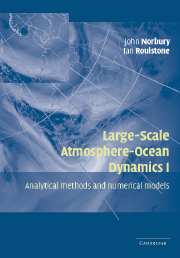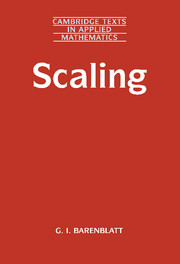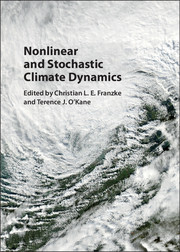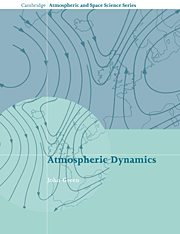Large-Scale Atmosphere-Ocean Dynamics
The complex flows in the atmosphere and oceans are believed to be accurately modelled by the Navier-Stokes equations of fluid mechanics together with classical thermodynamics. However, due to the enormous complexity of these equations, meteorologists and oceanographers have constructed approximate models of the dominant, large-scale flows that control the evolution of weather systems. The simplifications often result in models that are amenable to solution both analytically and numerically. This volume and its companion explain why such simplifications to Newton's second law produce accurate, useful models and, just as the meteorologist seeks patterns in the weather, mathematicians seek structure in the governing equations. They show how geometry and analysis facilitate solution strategies.
- Relevant for both mathematicians and meteorologists
- Contributions from top researchers in the field
Reviews & endorsements
'The book is a rich source of novel ideas and open research problems as well as up-to-date references. I shall want to refer back to it again and again.' Contemporary Physics
Product details
September 2002Hardback
9780521806817
402 pages
244 × 170 × 22 mm
0.84kg
Available
Table of Contents
- Introduction J. C. R. Hunt, J. Norbury and I. Roulstone
- 1. A view of the equations of meteorological dynamics and various approximations A. A. White
- 2. Extended-geostrophic Euler-Poincaré models for mesoscale oceanographic flow J. S. Allen, D. D. Holm and P. A. Newberger
- 3. Fast singular oscillating limits of stably stratified three-dimensional Euler-Boussinesq equations and ageostrophic wave fronts A. Babin, A. Mahalov and B. Nicolaenko
- 4. New mathematical developments in atmosphere and ocean dynamics, and their application to computer simulations M. J. P. Cullen
- 5. Rearrangements of functions with applications to meteorology and ideal fluid flow R. J. Douglas
- 6. Statistical methods in atmospheric dynamics: probability metrics and discrepancy measures as a means of defining balance S. Baigent and J. Norbury.









